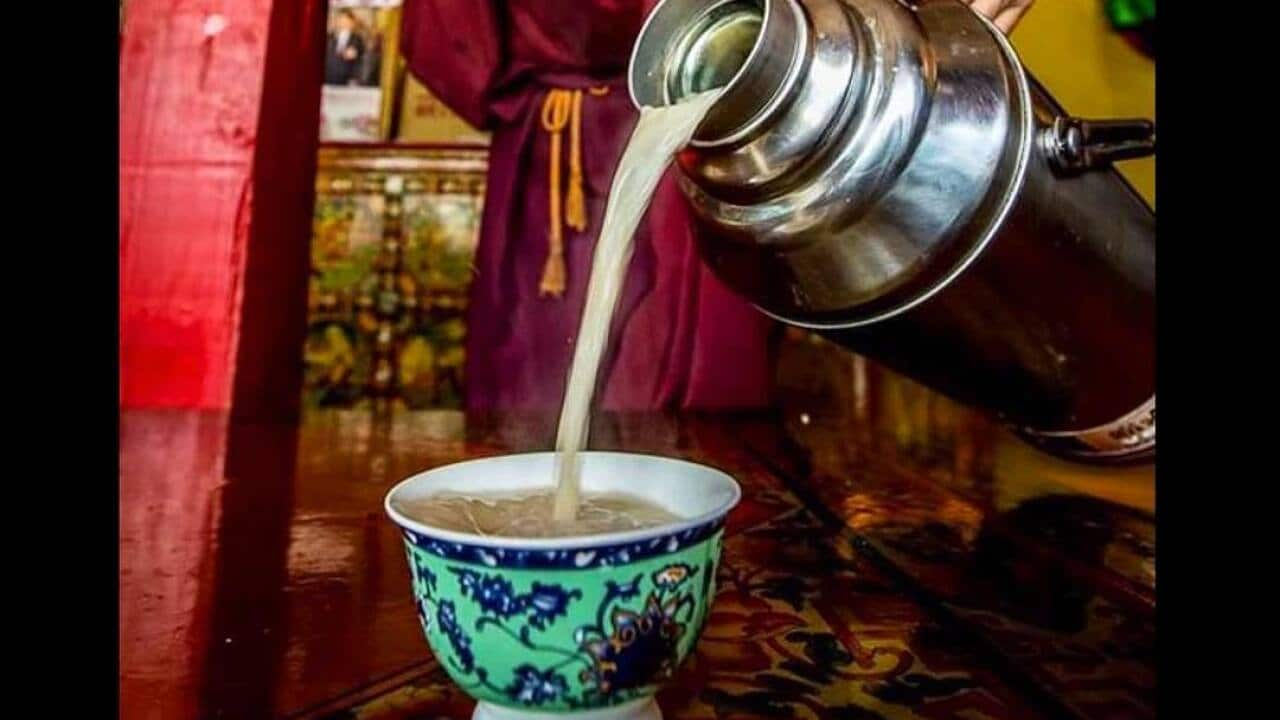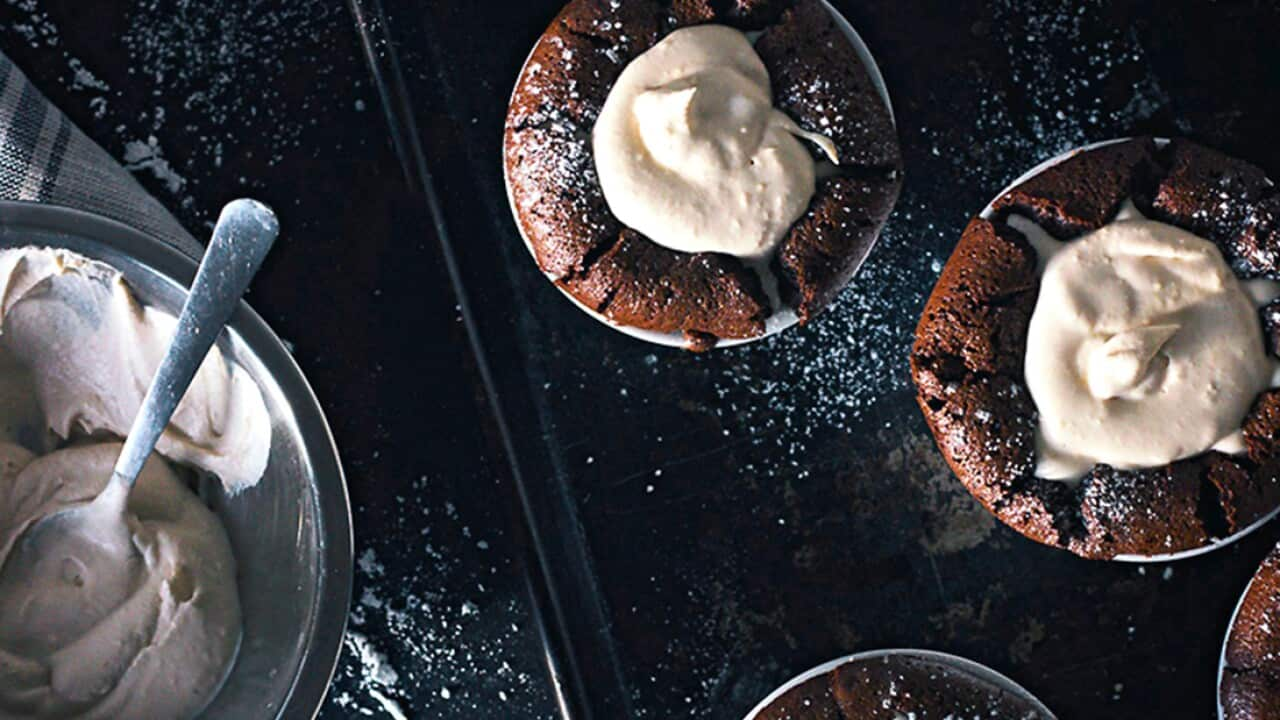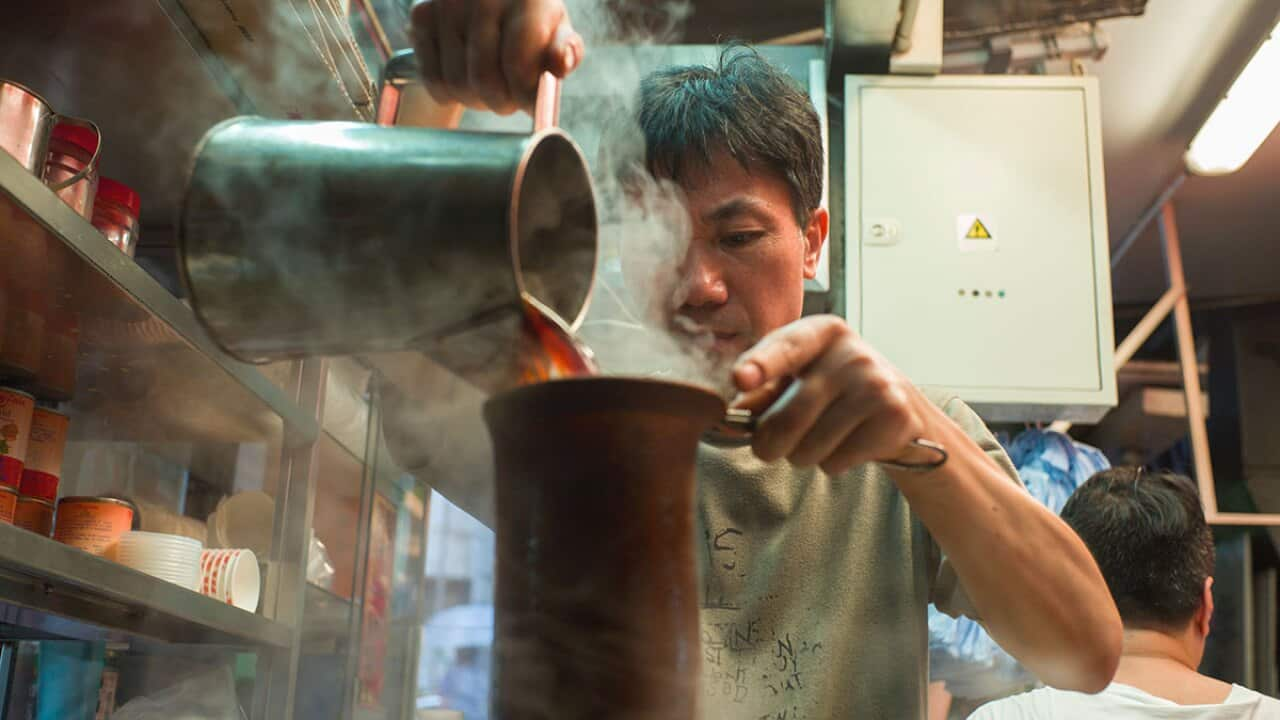Over in the ‘Roof of the World’ – in the towering Himalayan peaks of Tibet – thousands of locals sip on a very unique cup of tea a few times a day to keep their blood pumping in the cold.
Yak butter tea (also known as po cha or cha süma) is a creamy hot Tibetan beverage with a melted butter-like appearance and salty flavour.
“In Tibet, we have butter tea daily,” says Tsering Wangchuk, owner of the in the Sydney suburb of Dee Why. “Tibetans live at a high altitude, in cold climates and butter tea keeps you warm.”
Wangchuk, who was born in Tibet and later immigrated to Australia, details how an authentic yak butter tea is made.
“To make the traditional butter tea, we use big tea leaves, dried together to form a solid brick. We then add boiling hot water to the tea leaves.”
The tea leaves are left to steep in the water for several hours. After the tea leaves are strained from the mixture, a strong tea concentrate called ‘chaku’ is produced.
“Next, we put the salt in. Then, we add the butter.”
Wangchuk explains that even though people call the drink ‘yak butter tea’ there’s no such thing as yak butter because yaks are male animals, which do not produce milk. “So the milk and butter we use come from the dri, a female animal.”
Milk is then added to the brew to balance the taste: the lighter the tea, the less milk that is added and vice versa. Once the butter is added to the hot water, tea leaves, salt and milk, the beverage is churned.
“In my country, we have a manual mixer that you use to churn the butter tea. It’s about half the height of a person. We shake the butter tea in that mixer and the tea becomes buttery and salty.”
The tea mixture is then poured into a traditional Tibetan teapot and warmed – not boiled – ready to consume.
Tenzin Wangyal, who was born in Tibet and came to live in Australia in 2015, established the first Tibetan restaurant in Dee Why called . Around four months ago, he sold the business to Wangchuk who now runs the restaurant under the name Wild Yak.
Wangyal says butter tea was always a regular feature on the Little Tibet menu. These days, he makes the tea at his home in Sydney.
“In Australia, because we cannot get yak/dri butter, we use cream or butter made with cow’s milk which is saltier than yak butter,” Wangyal explains.
“So the taste of the butter tea that we make in Australia is a bit different to the traditional yak butter tea we would have in Tibet, but it is still very tasty and delicious.
“We have Tibetan tea on regular days but we also make it on special days [in Australia]. It’s part of the culture and our celebrations.”
The tea leaves are left to steep in the water for several hours. After the tea leaves are strained from the mixture, a strong tea concentrate called ‘chaku’ is produced. Next, we put the salt in. Then, we add the butter.
Wangyal says his family have Tibetan butter tea on Tibetan New Year (called Losar, which will be held on Tuesday 5 February in 2019). Wild Yak has kept Tibetan butter tea on the restaurant’s menu. The tea uses butter made from cow’s milk instead of dri butter and a black tea bag instead of traditional Chinese tea leaves.
Wangchuk says although butter tea is not a drink that you should consume regularly in the Australian climate because of its high fat and salt content, it is a drink you can have on occasion – if you have acquired the taste for it.
“At the restaurant, lots of our customers are Australian,” Wangchuk says. “They often want to order butter tea. Our staff try and explain to them before they go ahead with their order that it is a salty tea and not sweet. Some people still want to try it out of curiosity. “In the end, some customers say, ‘no this is weird’, while others love it. Come to the restaurant and try it.”
You can watch Adam Liaw learn how to make Tibetan yak butter tea on this Wednesday at 7.30pm on SBS, replay at 9.35pm Sundays on SBS Food (Ch 33), then later via Join the conversation #DestinationFlavour on Instagram , Facebook and Twitter . Check out for recipes, videos and more!
Destination Flavour China is sponsored by Cathay Pacific. For more information, please visit 

Source: Cathay Pacific






